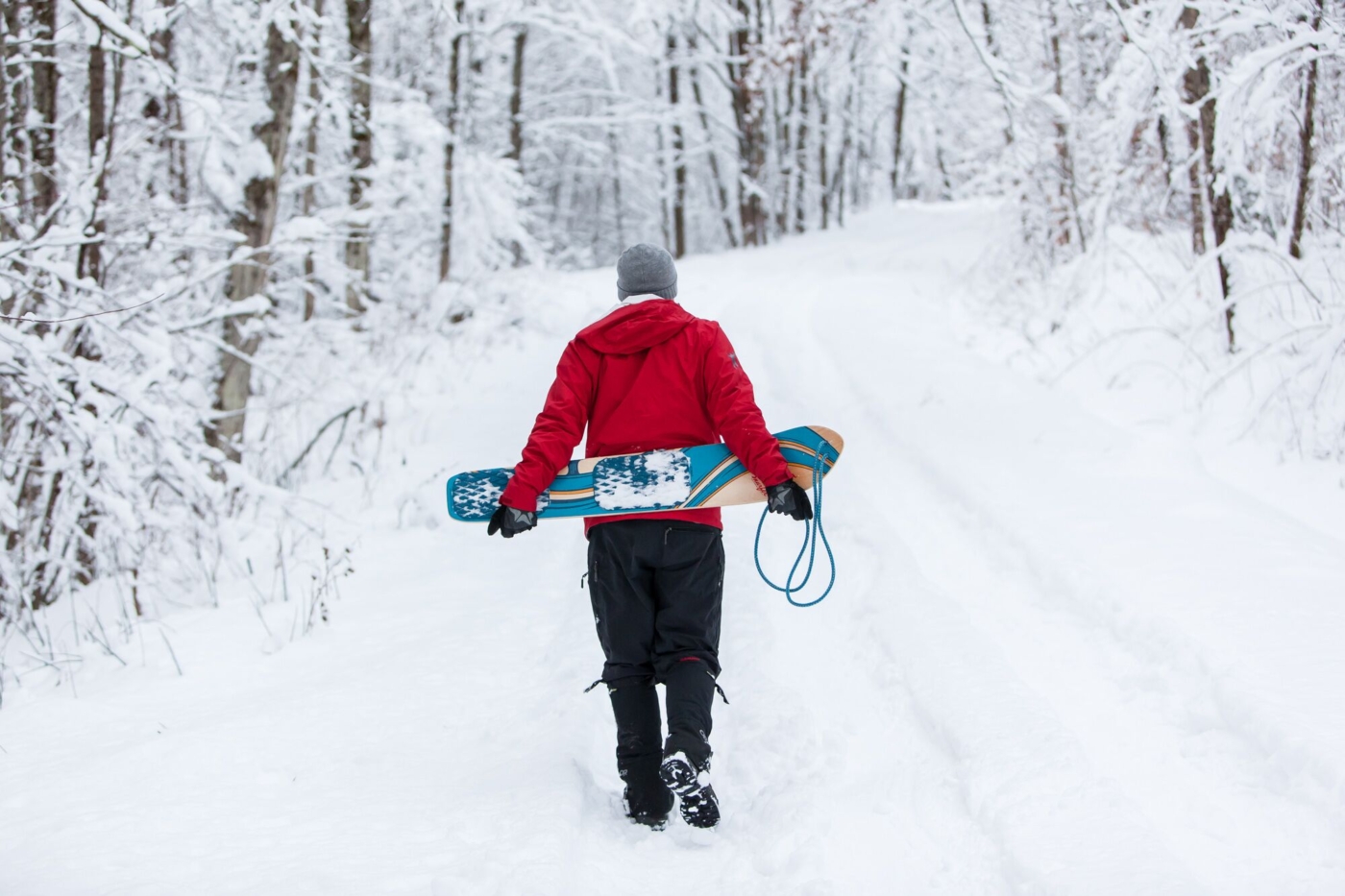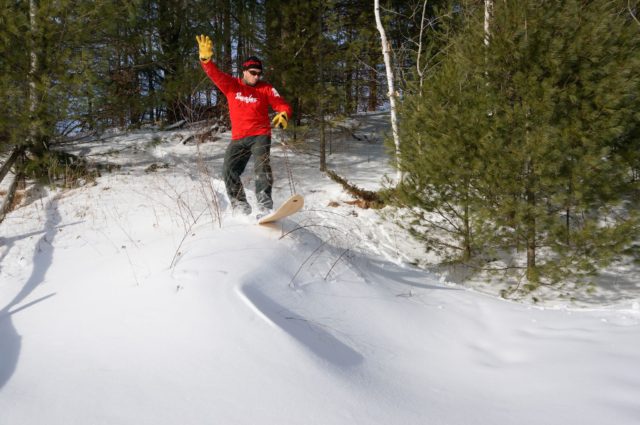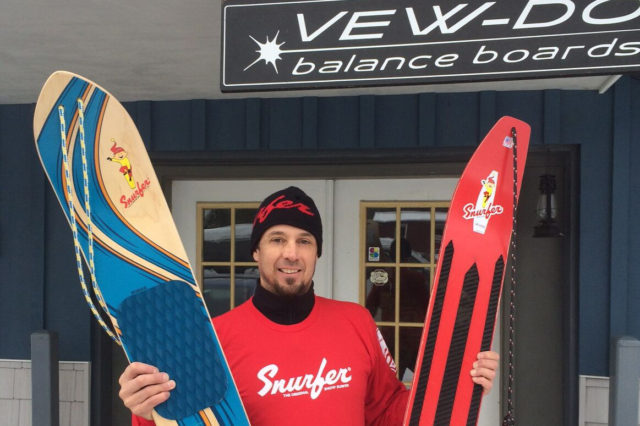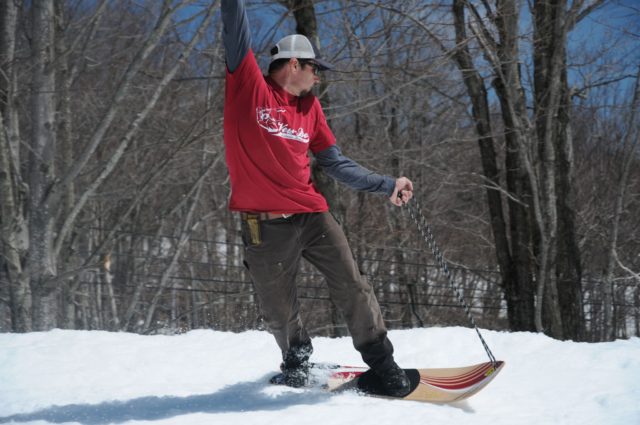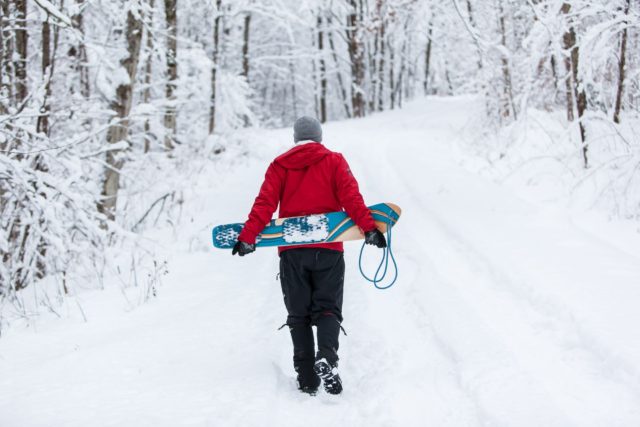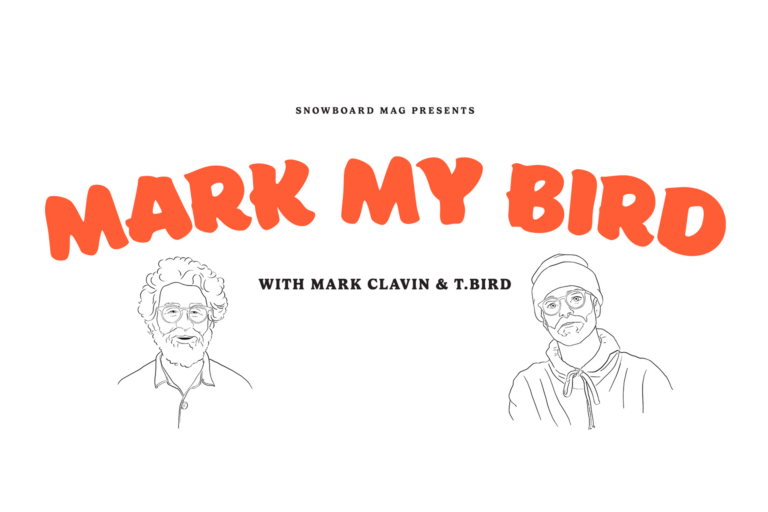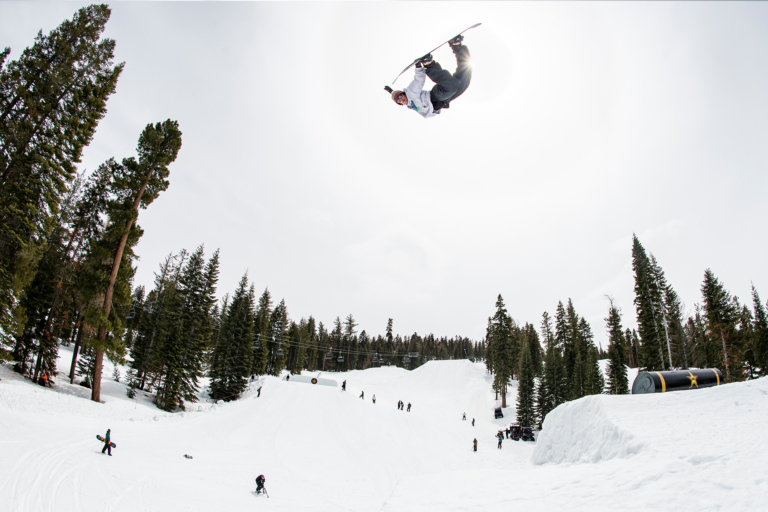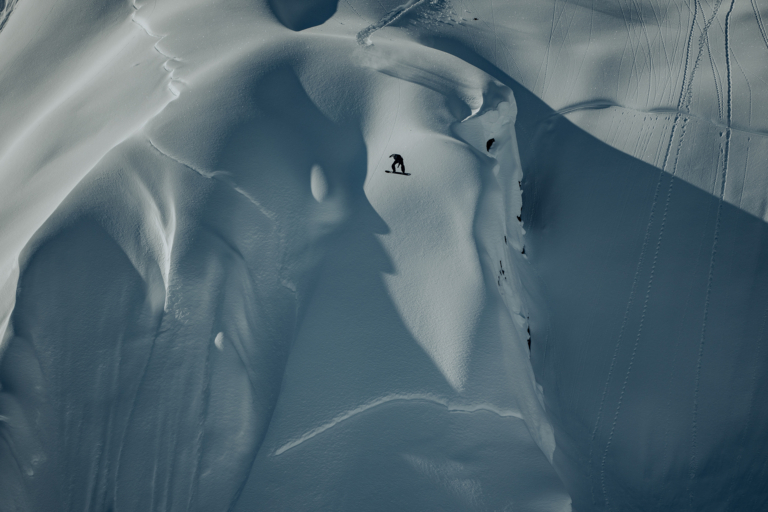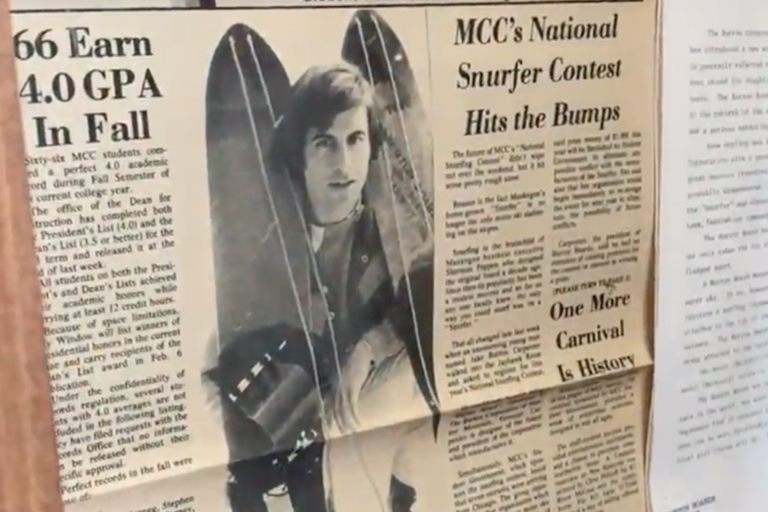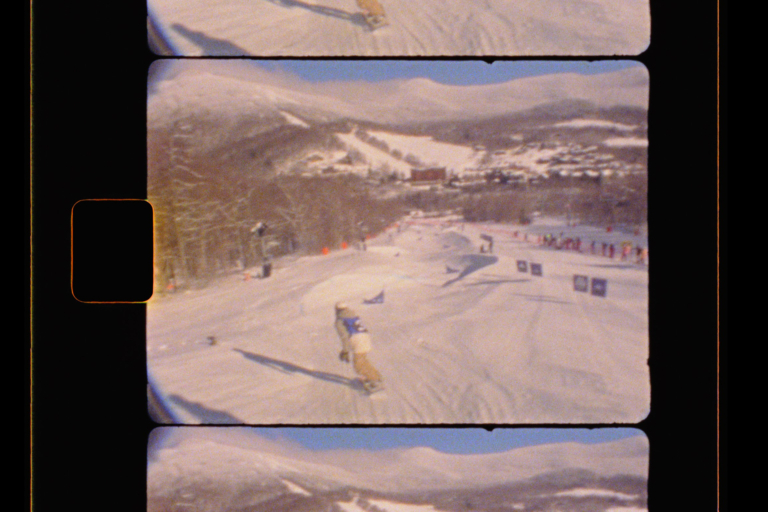The owner of the Snurfer patent, Brew Moscarello, snurfing the backwoods of Vermont.
Sometimes it’s easier to beg forgiveness than ask permission. In Brew Moscarello’s case he just didn’t have to beg. When Brew called snowboarding’s godfather to tell him he now owned the name of the device that started it all, Sherman Poppen gave him his nod of approval. Somehow, Sherman could sense Brew’s benevolent intent in taking over trademark on the Snurfer — a gadget whose modern existence was nothing outside of a few expensive relics on eBay and a paragraph on the Wikipedia Snowboarding page.
The man behind Vew-Do Balance Boards, Brew is an opportunist. His neighbor growing up outside New York City had a Snurfer, and it was winter days spent riding it that laid the groundwork for a lifelong devotion to snowboarding. After researching the status of its trademark, Brew decided to capitalize, though he would likely resent that word choice. As Brew puts it, “My objective was to get it in the hands of somebody who was going to do the right thing with it.”
Brew at the office.
While such a claim is logical from a PR standpoint and easy to make, he’s right, there really isn’t a more suited person to hold the Snurfer trademark. Brew spends time nearly every day during his Vermont winters on a Snurfer in his backyard, in the woods and on the golf courses around town. Variation in terrain spawned the need for shapes aside from the original. “I found that you really need to have different styles of boards for different conditions,” says Moscarello, “For hardpack, the narrow original shape works well, but for powder I wanted something with a wider nose, more fish-shaped.” As the brand enters its second season since resurrection, Snurfer is offering five models — each catering to a unique rider or style of riding.
No bindings, no problem.
Snurfers are prototyped in Vermont and made at a Wisconsin factory where skateboards have been pressed for decades — a factory that was struggling to keep the lights on as much of its skate manufacturing went overseas. The contract with Snurfer played a major role in reviving that business — something Brew, his colleague Dave Schmidt and Sherman are all proud of.
The Snurfer is not a snowboard. As Sherman views it, “I always thought the Snurfer was a great little hill-sliding toy, replacing the sled. I felt it would have more of a future as a toy than anything else.” Dave and Brew see it as a gateway to snowboarding. “I think in a lot of ways the sport of snowboarding has kind of missed the mark in terms of getting people into it,” says Dave, “My kids gravitated toward skiing, and, honestly, it pissed me off. Now that we’ve got Snurfers in the garage, they go out and Snurf ‘til they’re wiped out at night, and they’re interested in snowboarding again.”
Winter backroads are an ideal venue for the Snurfer.
Dave cites accessibility and cost as two of snowboarding’s critical flaws — a sentiment echoed by most anyone who’s taken the time to consider why our sport, or whatever you prefer to call it, isn’t putting up the numbers it once was. Whether or not it matters that snowboarding stays on a path of continuous growth is a different conversation, but as Dave puts it, “The Snurfer is all about simple access and low cost. It’s just about making it as easy as possible to get off the couch, put your device down and go play in the snow.” Few will find fault in that.
Check out the Snurfer lineup at snurferboards.com.
